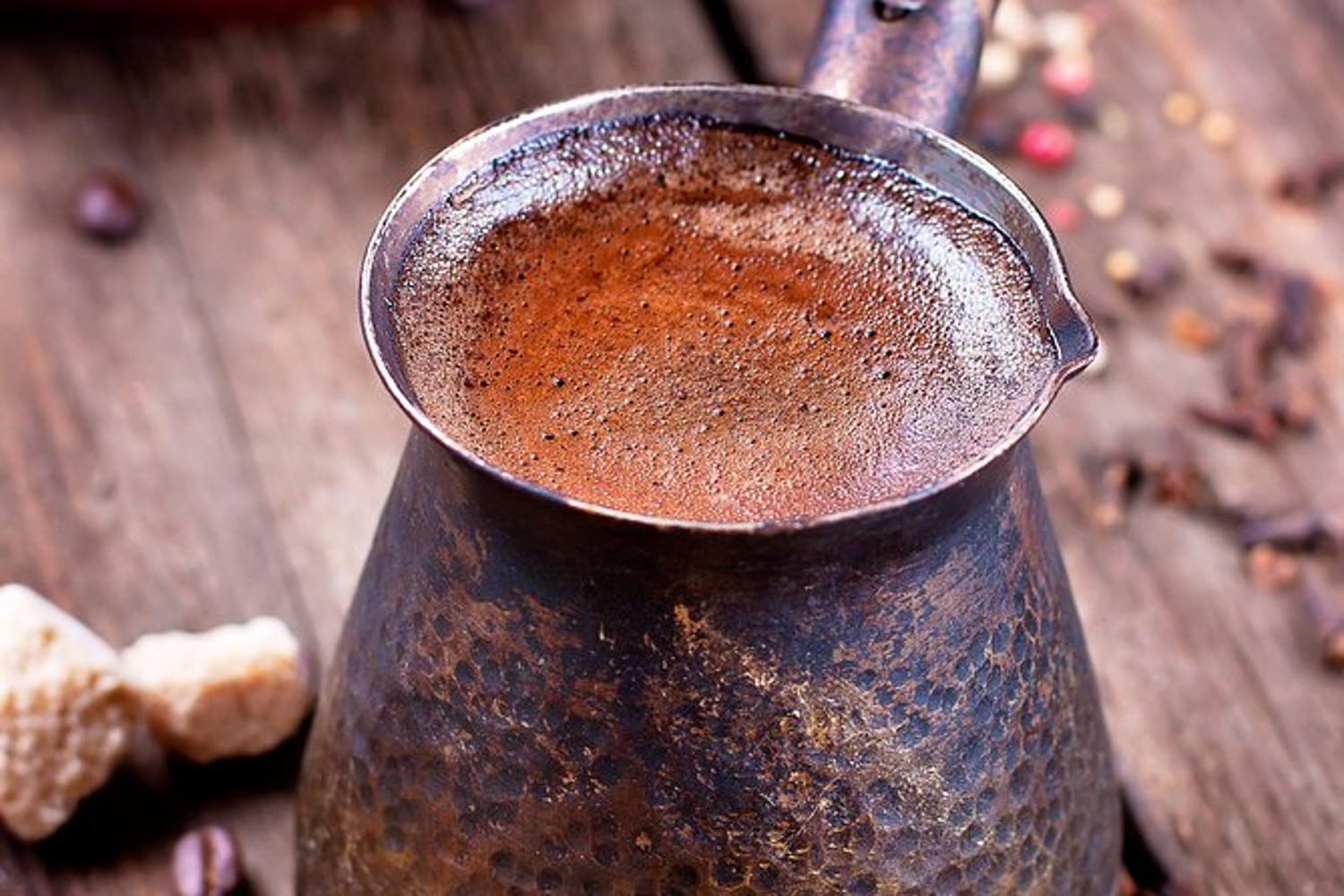Everthing You Need To Know About Turkish Coffee

Turkish coffee is not just a flavor in Turkey, it’s an enormous part of Turkish culture which became a must in our lives.
Coffee seeds have a fame as “black pearls” and, renowned for its saying “forty-year memory”, was served in the past by forty unique brewing methods. We have collected the history of the “coffee culture” that the Ottoman Empire transferred from the Arabian Peninsula to Europe.
The year in 1554, Ottoman Governor of Yemen, Ozdemir Pasha brought sacks full of coffee to City of Happiness, Istanbul, so that students would stay awake. Nonetheless, he transformed the coffee beans into an instant culture when he brought them to the sultan. Later our Sufi dervishes learnt to roast and successfully grind the coffee and from that day, the world knew a fruit, even though not cultivated on Turkish land, as Turkish coffee.
Thanks to the brand-new brewing method found by the Turks, coffee received the name “Turkish Coffee”. Turkish coffee, which comes to our day as plain, medium and sweet, used to have around 40 brewing types in the past.
First, in 1554, the people in Istanbul met with the coffee via the coffee houses opened in Tahtakale and spread rapidly throughout the city. Coffeehouses, where people had poetry and literature conversations, read books, wrote poems, played chess and backgammon at all hours of the day, made their mark on the social life of the period. Coffee, which marked the city life of Istanbul with coffee shops, gave its name to the street Tahmis, which means the place where coffee is cooked. Through merchants and travelers who traveled to Istanbul and the Ottoman ambassadors, the reputation of Turkish coffee reached all around the world.
In the siege of Vienna, Ottomans became so enthralled with coffee that they brought coffee in the sacks. Because they knew they could spend months there. When they dumped sacks full of coffee into the Tana River during retreating from the gates of Vienna, Polish Jewish Kolschitzky, who was in the Ottoman tent as an interpreter during the frequent relations of the Ottomans with Austria said,” what are you doing? Stop! I want this Muslim beverage as my spoils of war.” And from that moment, coffee houses began to show up in Vienna.

The Turkish coffee pot, cezve, is a method of preparing coffee that the Turks invented in the 16th century. This method soon spread across the world. Later on, the other types of coffee actually emerged.
Turkish coffee is cooked slowly in order to taste smooth and nice.
Just like the tea-time tradition in the English, a concept of time has come up about drinking Turkish coffee. Turkish coffee time is between morning and noon. The use of the word “kalvaltı”, which means the first meal of the day in Turkish, in the sense of food eaten before drinking coffee, also shows the importance of coffee in the life of society.
Turkish coffee escorts friends’ conversations, it is indispensable in councils for girls and for the Turkish, foamless coffee is not welcome. Turkish coffee is for making peace and fortune telling is its present. It’s said that there is a forty-year memory. We don’t ask our important friends about how they like their coffee because Turkish coffee is best as plain.
Coffee became a complete culture with coffee shops filled with artists and coffee inspired works. Mehmet Efendi, who started his business in 1871 with his father’s profession in Istanbul, which is also a commercial source as well as a culture, began to sell his raw coffee ready to his customers by grinding it in mortars. Thus, freshly roasted on Tahmis Street in Istanbul, the smell of coffee spread around. Presenting coffee for the first time to coffee lovers by grinding it, Mehmet Efendi labelled it as “Kurukahveci Mehmet Efendi”.
- Not everyone is offered coffee
- not everyone can receive complimentary coffee
- not everyone can drink coffee next to everyone else
- You should not drink while standing
- It doesn’t resemble Italian espresso
History of coffee
The year in 1554, Ottoman Governor of Yemen, Ozdemir Pasha brought sacks full of coffee to City of Happiness, Istanbul, so that students would stay awake. Nonetheless, he transformed the coffee beans into an instant culture when he brought them to the sultan. Later our Sufi dervishes learnt to roast and successfully grind the coffee and from that day, the world knew a fruit, even though not cultivated on Turkish land, as Turkish coffee.
Street of coffee smell
Thanks to the brand-new brewing method found by the Turks, coffee received the name “Turkish Coffee”. Turkish coffee, which comes to our day as plain, medium and sweet, used to have around 40 brewing types in the past.
First, in 1554, the people in Istanbul met with the coffee via the coffee houses opened in Tahtakale and spread rapidly throughout the city. Coffeehouses, where people had poetry and literature conversations, read books, wrote poems, played chess and backgammon at all hours of the day, made their mark on the social life of the period. Coffee, which marked the city life of Istanbul with coffee shops, gave its name to the street Tahmis, which means the place where coffee is cooked. Through merchants and travelers who traveled to Istanbul and the Ottoman ambassadors, the reputation of Turkish coffee reached all around the world.
Turkish Coffee is in Vienna, European Adventure
In the siege of Vienna, Ottomans became so enthralled with coffee that they brought coffee in the sacks. Because they knew they could spend months there. When they dumped sacks full of coffee into the Tana River during retreating from the gates of Vienna, Polish Jewish Kolschitzky, who was in the Ottoman tent as an interpreter during the frequent relations of the Ottomans with Austria said,” what are you doing? Stop! I want this Muslim beverage as my spoils of war.” And from that moment, coffee houses began to show up in Vienna.
How to prepare Turkish coffee ?

Turkish coffee is cooked slowly in order to taste smooth and nice.
Foam is a must
When you are preparing Turkish coffee, you have to have patience. Fast way it will not taste the same it’s supposed to and no one will like it for sure.
- You need to grind up as much as you can consume.
- Waited coffee more than a month is not fresh anymore.
- Prepare coffee based on how many cups you’ll make.
Firstly, you need a copper Turkish coffee pot to make a good Turkish coffee. We take a tablespoon of coffee and add water same size of the coffee cup but coffee always comes first. Second, we stir it for about 15 to 20 seconds. We keep the spoon next to cezve and stirring a couple of times, then leave it. You’ll stir it up on the counter of the bar before you put it on fire. After that, we place it over the flame. Only foamy coffee is acceptable for us. What do we+7 need to be able to drink coffee? A set of cups. The most characteristic of Turkish fincan is the wide base and narrow top. Why? So that the foam by no means fades by the last sip. Fineness. So that the coffee won’t cool. Let the slop you see in the handle sit in your dominant hand. Small coffee cup gives you ideal scale to drink, which will provide a healthy situation. The size is very important.
Turkish coffee in our daily life
Just like the tea-time tradition in the English, a concept of time has come up about drinking Turkish coffee. Turkish coffee time is between morning and noon. The use of the word “kalvaltı”, which means the first meal of the day in Turkish, in the sense of food eaten before drinking coffee, also shows the importance of coffee in the life of society.
Turkish coffee escorts friends’ conversations, it is indispensable in councils for girls and for the Turkish, foamless coffee is not welcome. Turkish coffee is for making peace and fortune telling is its present. It’s said that there is a forty-year memory. We don’t ask our important friends about how they like their coffee because Turkish coffee is best as plain.
Kurukahveci Mehmet Efendi
Coffee became a complete culture with coffee shops filled with artists and coffee inspired works. Mehmet Efendi, who started his business in 1871 with his father’s profession in Istanbul, which is also a commercial source as well as a culture, began to sell his raw coffee ready to his customers by grinding it in mortars. Thus, freshly roasted on Tahmis Street in Istanbul, the smell of coffee spread around. Presenting coffee for the first time to coffee lovers by grinding it, Mehmet Efendi labelled it as “Kurukahveci Mehmet Efendi”.








0 comments